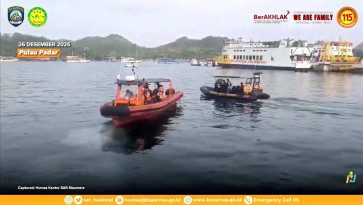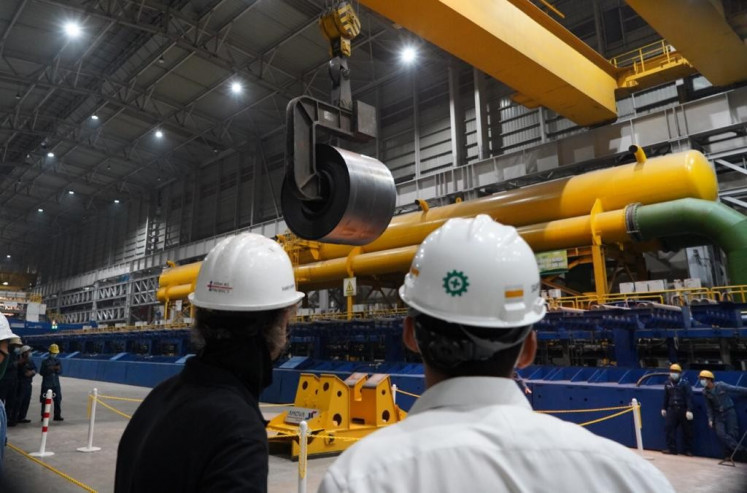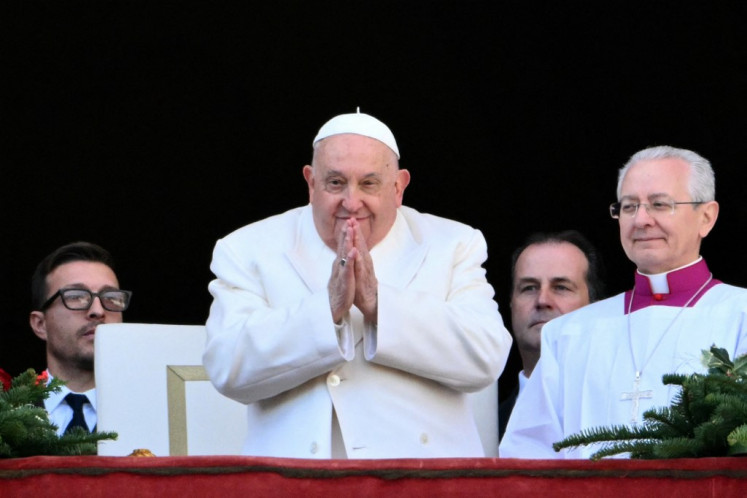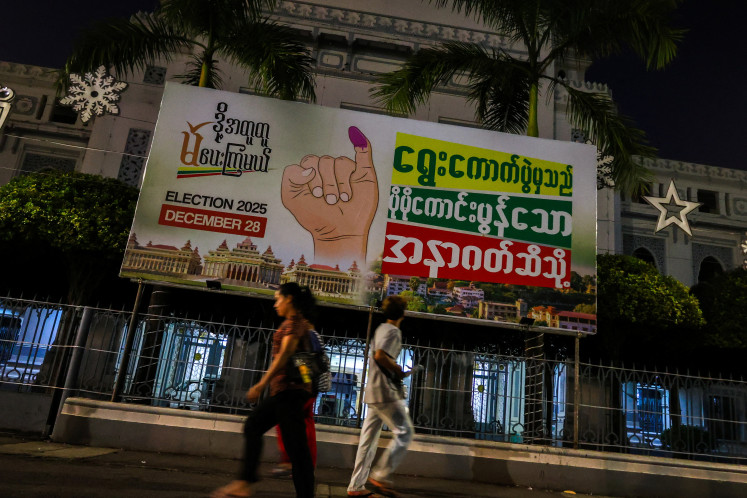Popular Reads
Top Results
Can't find what you're looking for?
View all search resultsPopular Reads
Top Results
Can't find what you're looking for?
View all search resultsKilling the messengers
Martua P. Siregar and Maraden Sianipar, both of whom worked for local weekly Pindo Merdeka, were found dead on an oil palm plantation on Wednesday and Thursday, respectively.
Change text size
Gift Premium Articles
to Anyone
T
here is no way to make this less alarming: Indonesia has become an increasingly dangerous place for journalists, and the consequences of this disturbing trend could be dire for the world’s third-largest democracy.
We are aware that even after the press was deregulated during the Reform Era, Indonesia has never had truly free media, with harsh libel laws still in place and a slew of big media companies still owned by or affiliated with powerful politicians. But we always considered the Reform Era to be less hostile to journalists than the authoritarian era that preceded it, when reporters had to risk their lives to do their job.
In 1996, Fuad Muhammad Syafruddin, affectionately known as Udin, a reporter for Yogyakarta-based newspaper Bernas, was murdered after exposing corruption in the regency of Bantul. The case — which quickly became a national cause célèbre but unfortunately has not been resolved until today — has served a sobering reminder of a dark era that many had hoped had become a thing of the past.
Alas, we know for a fact that has never been the case.
At least seven journalists have been killed in the Reform Era for doing their job. And we may soon have to update the figure, if the two journalists killed in Labuhan Batu, North Sumatra, are proven to have lost their lives because of their journalistic activities.
Martua P. Siregar and Maraden Sianipar, both of whom worked for local weekly Pindo Merdeka, were found dead on an oil palm plantation on Wednesday and Thursday, respectively. The news of their demise made national news on Saturday, when the world commemorated the International Day to End Impunity for Crimes against Journalists.
It is frightening that on the day Indonesian journalists were given a chance to remind the state of its obligation to resolve murder cases of fellow reporters, they had to write another news story showing how dangerous or even deadly their profession can be.
It remains unclear whether the murder is related to their activities as journalists or as activists representing locals in a land dispute. The Alliance of Independent Journalists (AJI) and the Indonesian Journalists Association (PWI) have condemned the killings and called on the authorities to investigate the case and bring the perpetrators to justice.
Regardless of the results of that investigation, the incident has again rung the alarm bell on the state of press freedom in the country. According to the AJI, the number of cases of violence against journalists kept increasing in recent years and rose from 60 cases in 2017 to 64 in 2018. Journalists, the association says, have fallen victim to violence committed by both private parties and the state. Indonesia, sadly, is not alone. The latest UNESCO report on the safety of journalists shows that killings and attacks on reporters are on the rise globally.
The Indonesian press now holds greater responsibility for performing checks and balances on the government after President Joko “Jokowi” Widodo decided to weaken his opposition by inviting his strongest political rival into his Cabinet. But can the press do the job effectively when violence against journalists is on the rise and impunity for it persists?
We can’t afford to let this go on. To quote United Nations Secretary-General António Guterres, “when journalists are targeted, societies as a whole, pay a price”.










